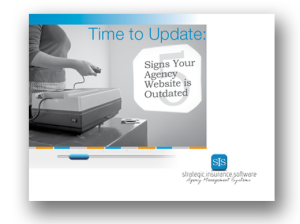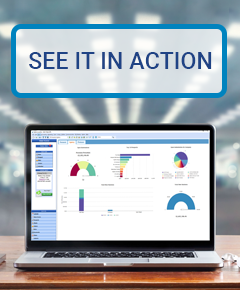Agency Management System Best Practices, Agency Operations, Technology Trends
 The claims management process is central to the insurance experience, containing many facets to ensure success. Government regulations, protection form fraud, and a positive client experience are just a few of the critical pieces to a strong claims management process. Agency owners are constantly looking for ways to improve this process and create an efficient and effective experience. Owners should focus on the key elements highlighted below to ensure their claims management process is at its best.
The claims management process is central to the insurance experience, containing many facets to ensure success. Government regulations, protection form fraud, and a positive client experience are just a few of the critical pieces to a strong claims management process. Agency owners are constantly looking for ways to improve this process and create an efficient and effective experience. Owners should focus on the key elements highlighted below to ensure their claims management process is at its best.
Integrated Systems
The agency management system is the hub of the independent insurance agency, and it should encompass multiple systems (email, accounting, claims processing) in one centralized place. Integrated systems speed up the claims process by concentrating all client and carrier information in one place, saving keystrokes, and reducing wait time. A centralized system also helps reduce fraud as all elements of the claims process are transparent in one location.
Customizable Claims Management System
The best claims management system is one that allows for customization for an agency’s specific needs. Being able to create the exact claims breakdowns needed saves time and money by making the process more intuitive for employees.
Paperless Workflow
Getting rid of paper means saving money on printing costs and reducing the chance of losing critical pieces. Utilizing a paperless workflow speeds up the claims process as documents can be sent immediately via secure email and signed virtually using esignature technology.
Real Time Downloads
Through Real Time downloads an agency can get immediate access to carrier information when processing a claim. This streamlines the claims process, making it one of the most effective time saving and cost cutting tools.
Mobile Access
Claims processing shouldn’t be tied to a desk. Mobile access allows for claims processing at any time via multiple devices. This means giving both agency employees and clients access to the claims processing system through apps and mobile-ready management systems. Such immediate response greatly improves service to an agency’s number one priority – their clients.
We at SIS put our customers first through our dedicated service team, and by integrating customer needs in the latest Partner XE 2015. With mobile access, integrated systems, and paperless workflow, this Partner XE is the best yet for efficient and effective agency workflow. Get in touch with our team today to find out more at [email protected].
Cyber Security

As an agency owner, you are aware of the importance of building and sustaining relationships with staff, clients, and partners. Communication is a crucial part of these relationships, especially as a means to keep them safe.
With the recent rise in cyber attacks and cyber threats, continual communication about such vulnerabilities is critical. However, your clients and employees need to be protected in different ways. Below are tips to keep both groups alert and safe.
Protecting Clients
- Educate clients on possible threats via blog posts and newsletters, providing information on types of attacks, how to spot them, and how to stay protected
- Inform about the ways your agency is keeping their personal data secure, such as cloud security and encrypted messaging
- Update your client base immediately in the event of a security breach, being honest about what happened (and didn’t!) and your next steps
- Connect with individuals who see a problem or suspect a threat, providing clients with access to your agents via online chats, emails, social media, etc. to make your agency accessible and build trust
Protecting Employees
- Create and update an agency wide security plan, that includes enforcing strong passwords and safe surfing habits
- Encourage transparency about data breaches and security issues, and impress upon employees the importance of sharing information in order to prevent further damage
- Train employees on how to spot common threats and what to do to prevent them
- Equip staff with the tools to keep data protected, such as anti-virus and data encryption software
By providing such information to clients and staff alike, you will further solidify trust, making your relationship even stronger.
We at SIS know and value such relationships with our clients, which is why we produce posts such as this to keep them informed and updated on how to make their agencies safe, efficient, and effective. Get in conversation with us today! Contact us at [email protected].
Cyber Security, Technology Trends
 It has been quoted that nearly every two seconds a new malicious URL is created for use in a cyber attack. These URLs quickly and quietly embed a small Trojan virus code in your computer, putting everything stored in your device at risk. This staggering fact impacts anyone using the internet, and is especially scary to those with a small business such as your independent insurance agency.
It has been quoted that nearly every two seconds a new malicious URL is created for use in a cyber attack. These URLs quickly and quietly embed a small Trojan virus code in your computer, putting everything stored in your device at risk. This staggering fact impacts anyone using the internet, and is especially scary to those with a small business such as your independent insurance agency.
You and your agency are responsible for protecting your customer’s information, and a cyber attack would easily compromise that data. In our last post, we looked at some of the latest trends in cyber threats. In this post, we will look over how your agency can be proactive in protecting your data from such online attacks.
Train your employees
Be upfront about the threats facing your agency’s data and lay out regulations to protect it. Enforce strong passwords and control application downloads. Be strict about access to sensitive data, limiting it to a few key staff.
Protect your emails
Encrypt, encrypt, encrypt! All emails (especially attachments) sent from your agency should be encrypted and password protected to stay safe. Screen emails closely and be careful about opening any that seem fishy.
Have a plan
Your agency should include cyber attacks as part of your contingency plan. This means documenting where data is stored, how to access it in the event of an attack, and how to recover your systems.
Back up and protect
Ensure all of your data is stored and backed-up in an off site server via the cloud. The best cloud services offer redundant back-ups, so your data is doubly protected, and are constantly monitoring for threats.
SIS Knows the Power of the Cloud
We at SIS know and utilize the power of the cloud, and take pride in making sure your agency’s data stays protected. Our cloud services boast around the clock physical security, internet and server firewall data protection, automatic security updates and malware and anti-virus protection to ensure your agency is protected.
Find out more about what SIS’s cloud services has to offer, and talk with one of our amazing client services team members today at 800.747.7005.
Marketing, Technology Trends
 As technology is evolving and updating at a rapid pace, what was popular yesterday is out of date today. This is especially relevant with websites, as new and innovative designs, styles, and techniques are popping up each day. It can be difficult to sift through what’s “for today” and what’s here to stay, but your agency needs to get in the game by updating your website.
As technology is evolving and updating at a rapid pace, what was popular yesterday is out of date today. This is especially relevant with websites, as new and innovative designs, styles, and techniques are popping up each day. It can be difficult to sift through what’s “for today” and what’s here to stay, but your agency needs to get in the game by updating your website.
Our latest eGuide addresses current industry standards for an up to date, relevant website as we look at 5 Signs Your Agency Website is Outdated. From searchability to responsiveness, we review the most important elements for getting your website up to snuff.
Download the eGuide here! While you’re there check out some of our other great resources, including FAQ and demos on our latest Partner XE 2015.
Cyber Security, Technology Trends
 Advances in technology continue to make our lives more efficient. Yet the more connected we become, the more vulnerable we are to online threats – both personally and professionally. Your independent insurance agency is no exception. When you know what you are up against, however, it becomes far easier to go on the offensive.
Advances in technology continue to make our lives more efficient. Yet the more connected we become, the more vulnerable we are to online threats – both personally and professionally. Your independent insurance agency is no exception. When you know what you are up against, however, it becomes far easier to go on the offensive.
Here are some of the latest cyber threats facing individuals and businesses, so you can learn and prepare your agency for online defense.
- Spearphishing
Much like phishing, this method of attack uses email to gain information. The sender uses key info such as your name or the name of someone you know to seem like an acquaintance. Usually the perpetrator gets facts from social networking sites, like posts about your recent purchases. A ruse then asks for a password, such as requesting to view a protected photo, and uses that password (or variations of it) to gain access to the recent retail site you visited.
- Ransomware
This is a new type of malware that holds your computer hostage. Hackers gain access to your device through downloads and file transfers from a suspicious source, such as a fraud email or phony website. Many pose as local law enforcement and post warning stating you have viewed “illicit materials” and need to pay a fine. Your device stays locked till you pay up. Many are fooled by this tactic due to the attacker’s ability to pinpoint geographic location and use local authority emblems in postings.
- Typosquatting
One of the easiest cyber-attack traps to fall in to, this tactic relies on users mistyping a common website name (i.e. “Googel” for “Google” or “Zapppos” for “Zappos”). The fraud sites the users land on may appear strikingly similar to the intended page, making it difficult to identify a threat. Once on the page, visitors are at risk of malware downloads due to the site’s seeming legitimacy.
It’s important for your agency to alert employees and clients about these new threats to keep their data safe from attack. One of the best pieces of advice is to store data in the cloud, which is why we at SIS store all our data in secure, off site servers with redundant backup. Find out more about SIS’s cloud security and other Partner XE benefits by contacting us at [email protected].

 The claims management process is central to the insurance experience, containing many facets to ensure success. Government regulations, protection form fraud, and a positive client experience are just a few of the critical pieces to a strong claims management process. Agency owners are constantly looking for ways to improve this process and create an efficient and effective experience. Owners should focus on the key elements highlighted below to ensure their claims management process is at its best.
The claims management process is central to the insurance experience, containing many facets to ensure success. Government regulations, protection form fraud, and a positive client experience are just a few of the critical pieces to a strong claims management process. Agency owners are constantly looking for ways to improve this process and create an efficient and effective experience. Owners should focus on the key elements highlighted below to ensure their claims management process is at its best.
 It has been quoted that
It has been quoted that  As technology is evolving and updating at a rapid pace, what was popular yesterday is out of date today. This is especially relevant with websites, as new and innovative designs, styles, and techniques are popping up each day. It can be difficult to sift through what’s “for today” and what’s here to stay, but your agency needs to get in the game by updating your website.
As technology is evolving and updating at a rapid pace, what was popular yesterday is out of date today. This is especially relevant with websites, as new and innovative designs, styles, and techniques are popping up each day. It can be difficult to sift through what’s “for today” and what’s here to stay, but your agency needs to get in the game by updating your website.
